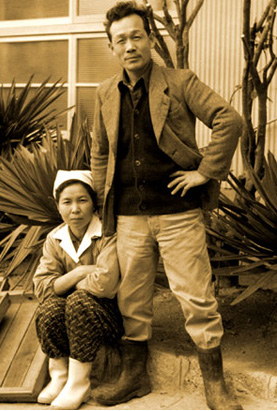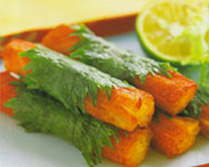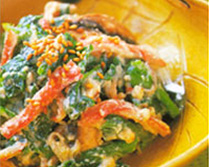There were three difficulties to be overcome to develop a machine for the mass production of Fish Stick.
The first problem was how to bind together thin noodle-like fish meat. The second problem was how to apply the red coloring evenly. The third problem was how to cut the product to the same length.
These three problems of binding, blowing, and cutting had to be resolved.
Katsuichi’s experience and ingenious approaches, which he cultivated in the development of original kamaboko products such as Sazare Ishi and Hamano Matsutake, helped realize the development of this machine as well.
After repeated trials and improvements of the machine, Katsuichi finally succeeded in independently making a fully automated mass production line in May 1978, a miraculous feat at the time. This production line embodies all the expertise of Osaki Suisan.
In those days, Katsuichi used to say jokingly, “I assembled and disassembled the machine day in and day out. They said this factory looked more like a scrap yard. Well, looks like we finally have a Stick factory now.”
The Fish Stick first attracted attention at sushi restaurants.
The product gradually gained popularity as offering substantially the same taste as expensive crab sushi at much lower prices. At the same time, the Company was flooded with requests for interviews from television stations, magazines, and other media, which made the name of Katsuichi and Osaki Suisan widely known across Japan.
At that time, the kamaboko industry was struggling in a depression. So other companies also started selling products similar to the Fish Stick.
Business became brisk in the kamaboko industry after a long time. People enjoyed crab-flavored kamoboko as a new type of food, and started using it in a variety of way��s, such as for salad topping, tempura, and sushi. As it started to be used in restaurants and home cooking, the consumption of imitation crab sticks jumped significantly.
Naturally, competition in the industry became fierce.








